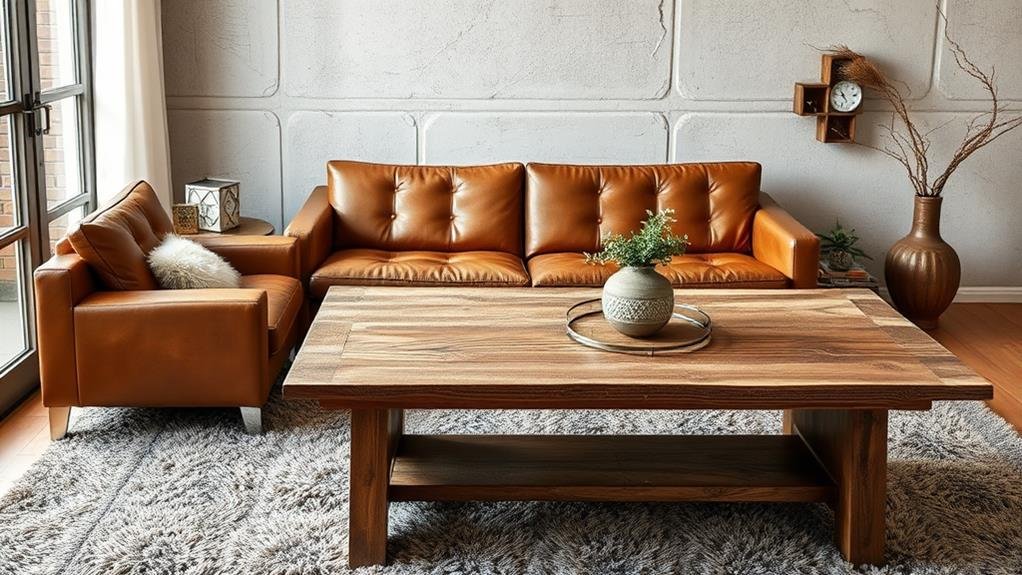Step into the realm of interior design and discover the key elements that sculpt spaces with charm and functionality. Embrace the art of color schemes, painting an ambiance that mirrors emotions and cultural tales through seasonal hues and trendsetting tones. Dive into furniture selection, where style marries practicality to cater to your lifestyle and evolving preferences. Witness the dance of layout and space planning, guiding traffic flow and room zones for seamless functionality and visual appeal. Explore the textures and patterns that breathe dimension and harmony into design. Embark on a journey through lighting, focal points, and sustainability to unlock the secrets of a truly captivating space.
Key Takeaways
- Color schemes set ambiance and reflect trends.
- Furniture should be functional and stylish.
- Space planning impacts flow and functionality.
- Textures and patterns add depth and interest.
- Lighting design enhances mood and functionality.
Color Schemes
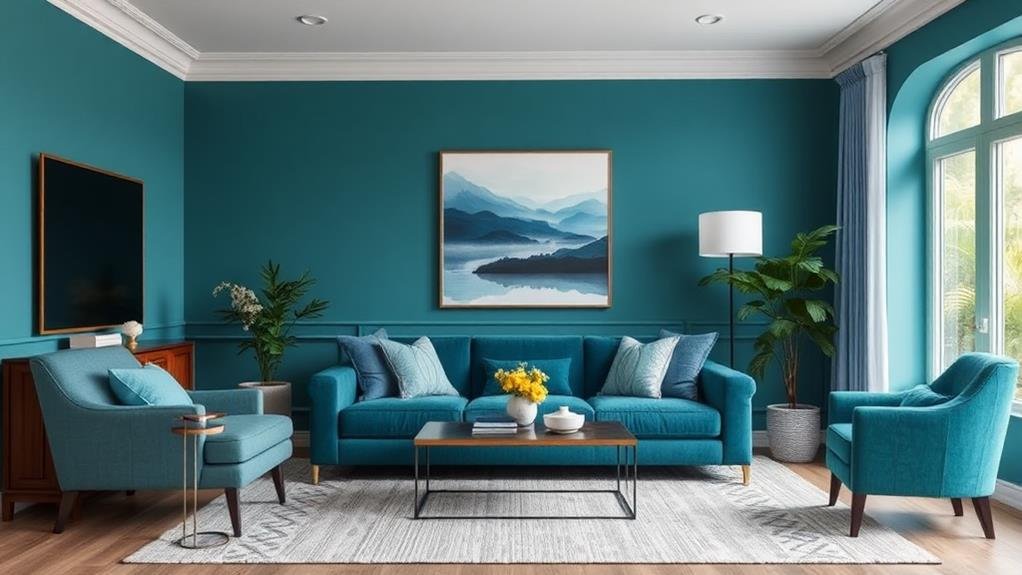
Color schemes are the foundational building blocks of interior design, shaping the ambiance and tone of a space. Understanding color psychology can help you choose the perfect hues to evoke specific emotions.
Seasonal palettes often draw inspiration from nature, with warm tones in autumn and cool shades in winter. Cultural influences can also play a significant role in color choices, reflecting traditions and beliefs.
Incorporating trending colors can give your space a modern feel, while ensuring color balance is crucial for a harmonious look. Different colors can elicit various emotional responses, so consider using complementary shades to create a dynamic atmosphere.
Monochromatic schemes can bring a sense of elegance and simplicity, perfect for a minimalist aesthetic.
Don't forget to add accent colors to liven up the room and create focal points. Each color you choose has the power to enhance moods and transform your space, so explore different combinations to find the perfect palette for your home.
Furniture Selection
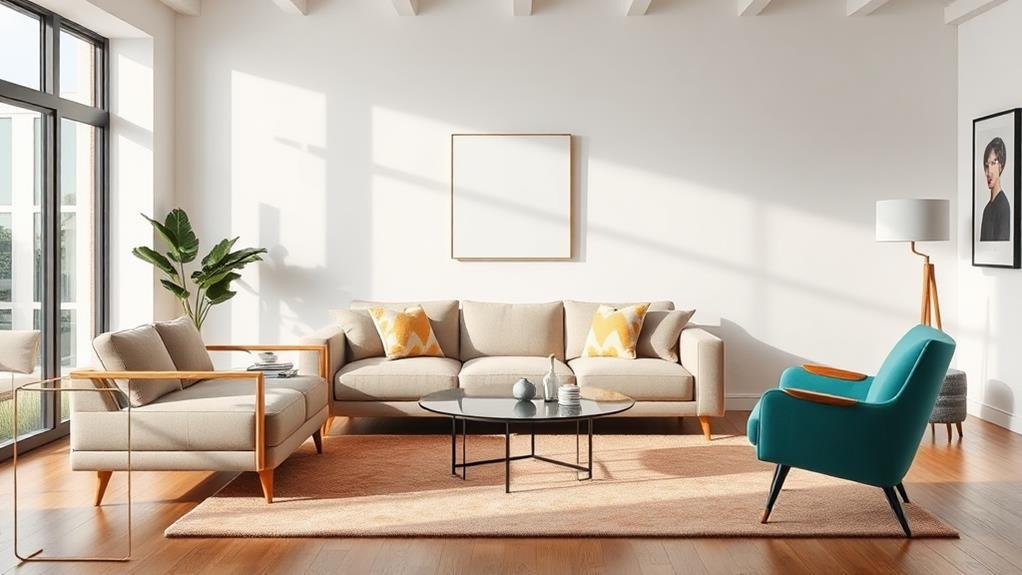
When it comes to selecting furniture for your space, think about the style versatility and how it can adapt to your evolving tastes over time.
Focus on the functionality of each piece, ensuring that it not only looks great but also serves a purpose in your everyday life.
Make choices that reflect your personality and lifestyle, creating a harmonious blend of style and practicality in your home.
Style Versatility
With interior design, the way you select furniture plays a crucial role in shaping the style and atmosphere of a space.
Style versatility in furniture selection allows you to blend various elements seamlessly. You can infuse minimalist aesthetics by opting for sleek, clean-lined pieces that exude simplicity.
Embrace eclectic influences by mixing and matching different styles to create a unique and personalized look. Incorporating cultural inspirations through furniture pieces can add depth and history to your space.
Keeping up with seasonal trends enables you to refresh your interiors and stay current. Spatial transitions can be emphasized by selecting furniture that complements the flow and layout of a room.
Contemporary adaptations bring a modern touch to traditional elements, creating a harmonious balance between the past and the present.
Experimenting with innovative materials such as glass, metal, and reclaimed wood can elevate the overall design aesthetic of your space.
Choose furniture wisely to craft a versatile style that reflects your personality and vision.
Functionality Focus
To ensure your interior space not only looks visually appealing but also functions efficiently, the focus on furniture selection becomes paramount.
When choosing furniture, consider how it can contribute to space optimization, enhancing user experience, and embodying multifunctional design. Accessibility considerations are crucial for inclusivity, while adaptive reuse adds a sustainable touch to your space.
Incorporating ergonomic principles ensures comfort and productivity. Safety features shouldn't be overlooked, especially in homes with children or elderly individuals.
Cultural influences can add a unique flair to your design, reflecting your heritage or interests. Seasonal adaptability allows for changes with the weather or your mood.
Lastly, prioritize furniture with easy maintenance to keep your space looking fresh effortlessly.
Layout and Space Planning
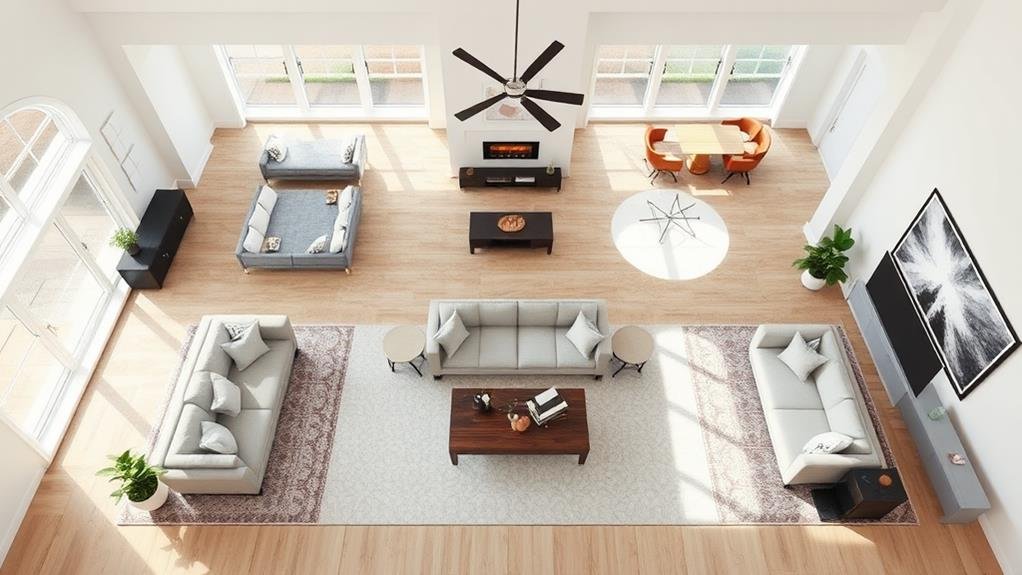
Amidst the myriad choices and considerations that go into crafting a harmonious living space, the importance of layout and space planning can't be overstated.
When designing a room, think about the flow of traffic and how individuals will move through the space. Consider the placement of furniture to ensure a smooth and efficient traffic flow, allowing for easy navigation without obstacles.
Room zoning is another key aspect to consider; it involves dividing the space into different functional zones based on the activities that will take place. By strategically zoning different areas, you can create a more organized and purposeful layout.
Effective space planning involves finding a balance between aesthetics and functionality. Each corner, wall, and piece of furniture plays a crucial role in shaping the overall look and feel of the room.
Pay attention to proportions, scale, and the relationship between different elements to create a space that's both visually appealing and practical.
Textures and Patterns
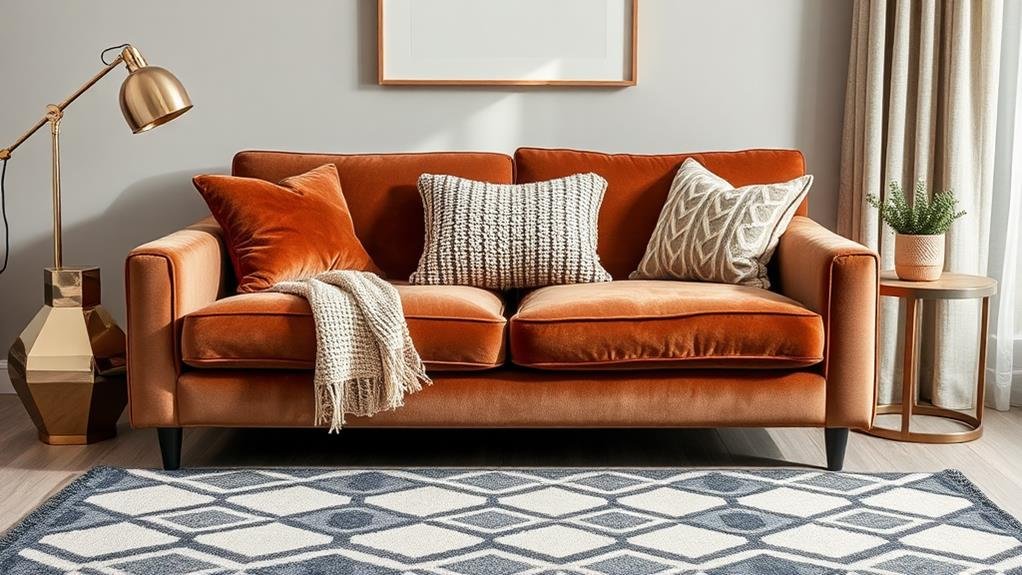
As you infuse textures and patterns into your interior design, you'll find that the variety in textures creates depth and visual interest, making your space feel dynamic and inviting.
By harmonizing patterns effectively, you can achieve a cohesive look that blends different elements seamlessly, adding personality to your room.
Remember the key to a well-designed space lies in balancing the textures and patterns in a way that complements each other without overwhelming the senses.
Textural Variety Importance
Among the fundamental components contributing to a captivating interior design scheme is the incorporation of a diverse range of textures and patterns.
This textural variety holds the power to transform a space, creating a harmonious blend of elements that engage both the senses and emotions. By carefully curating different textures and patterns, you can craft a truly immersive environment that speaks volumes without words.
- Textural Contrast: Contrasting textures bring life and dimension to a room, enhancing its visual appeal and adding interest.
- Tactile Experience: Incorporating varying textures allows for a tactile experience, inviting touch and interaction.
- Material Layering: Layering different materials creates depth within a space, making it visually dynamic.
- Sensory Engagement: Textural variety engages the senses, making a space more inviting and memorable.
- Emotional Resonance: Different textures and patterns can evoke emotions, adding warmth, comfort, and personal connection to a room.
Harmonizing Patterns Effectively
Navigating the realm of interior design involves not only incorporating diverse textures but also harmonizing patterns effectively. When it comes to pattern mixing, it's crucial to find a balance that creates visual rhythm in your space. By strategically combining different patterns, you can add depth and interest to the room's design.
Here is a guide to help you harmonize patterns effectively:
| Patterns | Scale | Color Scheme |
|---|---|---|
| Floral prints | Large scale | Soft pastels |
| Geometric shapes | Medium scale | Bold colors |
| Stripes | Small scale | Neutral tones |
To create a cohesive look, consider incorporating patterns of varying scales and ensuring they share at least one color in common. This way, you can achieve a harmonious blend of patterns that adds excitement and personality to your interior while maintaining visual balance. So, embrace the art of pattern mixing and watch your space come alive with captivating visual rhythm.
Balancing Textures and Patterns
Incorporating a balance of textures and patterns is an art form that can elevate your interior design to new heights.
By skillfully layering techniques and experimenting with pattern mixing, you can create a space that's visually captivating and harmoniously textured.
Here are some key points to consider:
- Texture Variety: Introduce a mix of textures such as smooth, rough, soft, and shiny to add depth and interest to your design.
- Scale Play: Experiment with different scales of patterns to create a dynamic visual appeal while maintaining balance.
- Color Coordination: Ensure that the colors in your chosen textures and patterns complement each other to achieve a cohesive look.
- Focal Points: Use textures and patterns strategically to highlight key areas or furniture pieces in the room.
- Personal Touch: Infuse your unique style into the design by combining textures and patterns that resonate with you, creating a space that feels genuinely yours.
Lighting Design
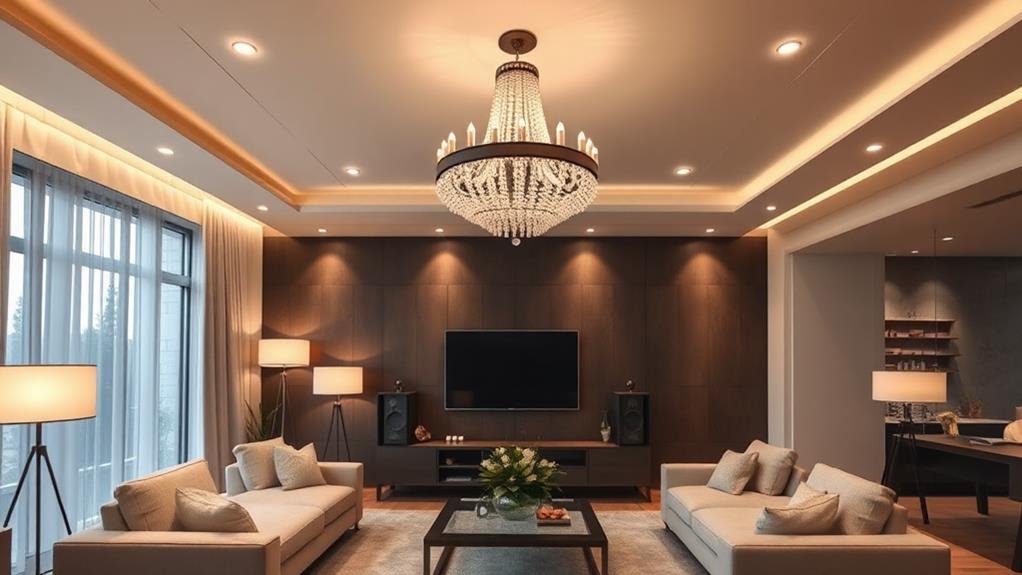
Crafting a well-thought-out lighting design is a pivotal element in interior decoration. When considering lighting, it's vital to incorporate various types such as ambient lighting to provide overall illumination, task lighting for specific activities, and accent lighting to highlight features.
Natural light is a valuable asset that should be maximized through strategic placement of windows and mirrors. Selecting the right light fixtures not only adds to the aesthetic appeal but also influences the functionality of the space. Utilizing lighting controls allows you to adjust the intensity and color temperature to create different moods.
In today's trends, mood lighting is increasingly popular for its ability to transform the ambiance of a room. Energy efficiency has also become a top priority, with the use of LED lights and smart technology.
Stay updated on lighting trends to incorporate innovative and stylish options into your design. By mastering lighting design, you can elevate the atmosphere of a room while also ensuring it meets your practical needs.
Accessories and Decor
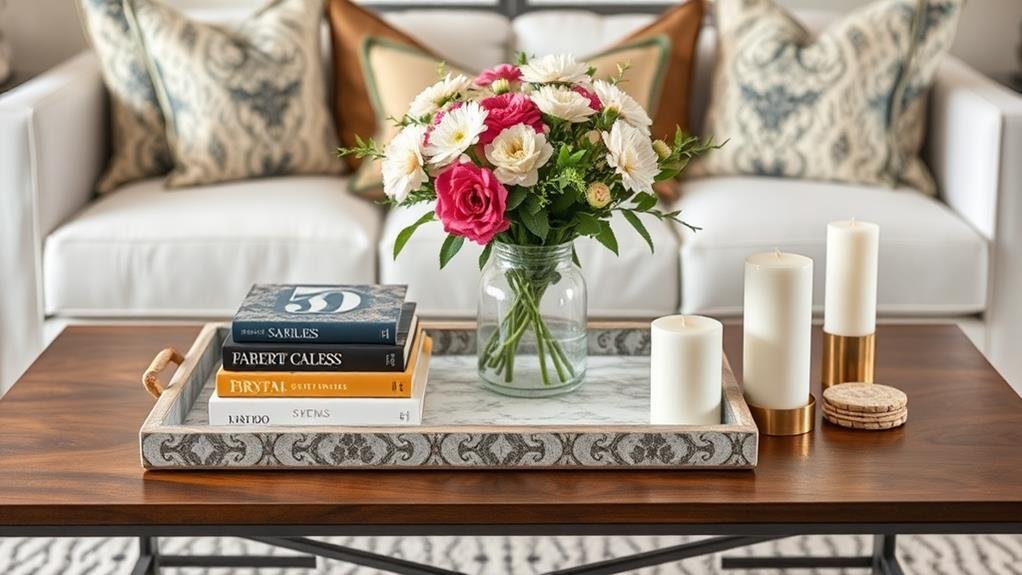
Enhancing the ambiance of a space goes beyond furniture and paint colors; accessories and decor play a significant role in bringing a room to life. Adding artistic displays, seasonal accents, and cultural influences can transform your space into a personalized sanctuary.
Consider incorporating the following elements to elevate the aesthetics of your room:
- Statement Pieces: Unique items that grab attention and serve as conversation starters.
- Vintage Finds: Timeless pieces that add character and charm to your decor.
- Functional Art: Items that are both practical and visually appealing, combining utility and beauty.
- Wall Hangings: Artwork or decor mounted on walls to create focal points or enhance a theme.
- Personal Mementos: Objects that hold sentimental value, adding a personal touch and warmth to the room.
Don't forget to experiment with layered accessories, nature elements, and different textures to create a visually rich and inviting space that reflects your personality.
Accessories and decor are the finishing touches that tie the room together, making it a true reflection of your style and taste.
Functionality and Comfort
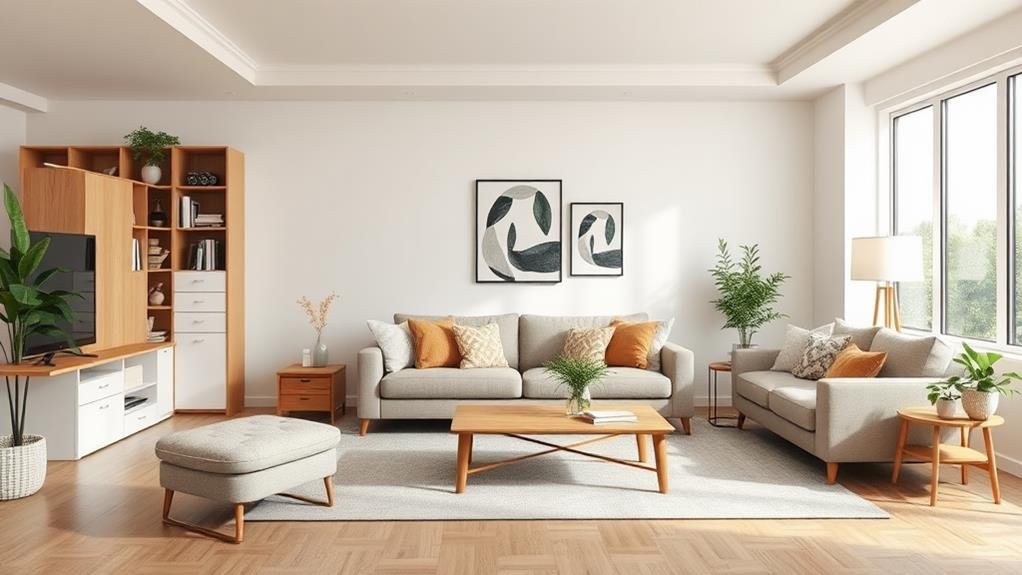
With a keen eye for detail and a focus on practicality, creating a harmonious balance between functionality and comfort is essential in interior design. Understanding user needs and considering spatial awareness are crucial aspects. Designing spaces that cater to individuals' comfort zones through ergonomic features can have a significant psychological impact on the overall user experience.
| User Needs | Spatial Awareness | Comfort Zones |
|---|---|---|
| Lifestyle integration | Adaptability features | Ergonomic design |
Integrating adaptability features allows for a seamless transition between different functions within the space, enhancing the user experience. By aligning ergonomic design with the inhabitants' lifestyle, a sense of ease and practicality is achieved. Lifestyle integration ensures that the design not only looks good but also functions efficiently for the individuals using the space. When these elements are considered, the space becomes more than just visually appealing; it becomes a sanctuary where functionality and comfort coexist effortlessly.
Balance and Harmony
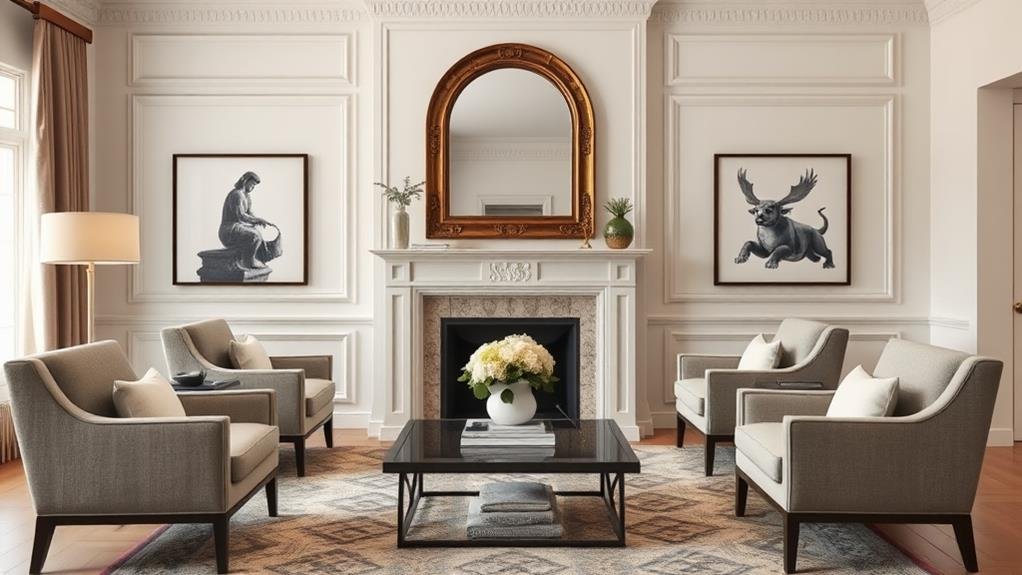
As you enter a well-designed room, your eyes are immediately drawn to the symmetrical layout and the way everything seems to effortlessly come together.
The balance created by aligning elements on either side creates a sense of order that's visually pleasing and calming to the senses.
Additionally, a well-thought-out color palette that flows harmoniously throughout the space ties everything together, creating a cohesive and inviting atmosphere.
Symmetry in Design
Balancing symmetry is a fundamental aspect of interior design that plays a crucial role in creating a harmonious space. Symmetry not only enhances visual impact but also contributes to the overall aesthetic appeal by emphasizing architectural features and adhering to design principles that evoke an emotional response.
Embracing symmetry in design is influenced by cultural factors that help develop spatial awareness and achieve perfect design balance, resulting in an artistic expression of function and form.
- Harmony Through Proportion: Symmetry creates a sense of equilibrium by distributing visual elements evenly.
- Reflecting Architectural Lines: Symmetrical design mirrors the architectural features within a space, enhancing its overall coherence.
- Cultural Symmetry: Different cultures have varying perspectives on symmetry, affecting design choices and preferences.
- Functional Symmetry: Symmetry not only enhances the visual appeal but also contributes to the functionality and flow of a space.
- Emotional Impact: Well-executed symmetry has the power to evoke emotions and create a sense of order and tranquility within a room.
Color Palette Coherence
Mirroring the structured elegance brought about by symmetry, an equally vital component of achieving a cohesive interior design is the coherence in the color palette.
Color psychology plays a significant role in how different hues affect emotions and perceptions. Understanding the emotional impact of colors helps in creating harmonious spaces that evoke the desired mood.
Cultural influences can also dictate color preferences and meanings, adding depth to a room's ambiance. Seasonal trends often inspire color choices, reflecting the mood of the time and infusing freshness into the design.
Color symbolism adds layers of meaning to a space, enriching its visual appeal. To ensure visual flow, it's essential to carefully select colors that complement each other and create a cohesive look throughout the room.
Mood enhancement through colors is a powerful tool in interior design, allowing for the creation of spaces that uplift and inspire. Skillful color layering can add depth and complexity, making a room visually intriguing.
Focal Points
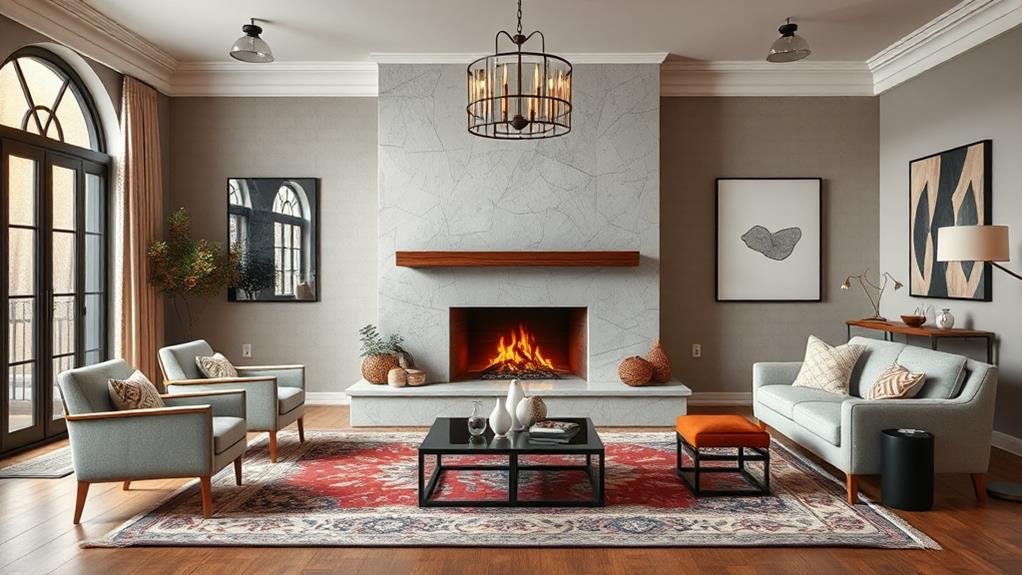
At the heart of every well-designed space lies the concept of focal points. These design elements are essential for creating visual impact, allowing for artistic expression, and enhancing the overall room dynamics.
Imagine your space as a canvas waiting to be brought to life through eye-catching features that draw the eye and create a sense of intrigue. Focal points serve as statement pieces, highlighting architectural details, color accents, and setting the mood of the room while enhancing spatial awareness.
- Draw the Eye: Focal points direct attention and create visual interest.
- Enhance Mood: They contribute to the overall ambiance and feel of the space.
- Anchor the Room: Focal points provide a central focus for the design.
- Balance Elements: They help create harmony and cohesion within the space.
- Personalize Space: Focal points can reflect your personality and style, making the room uniquely yours.
Personalization and Style
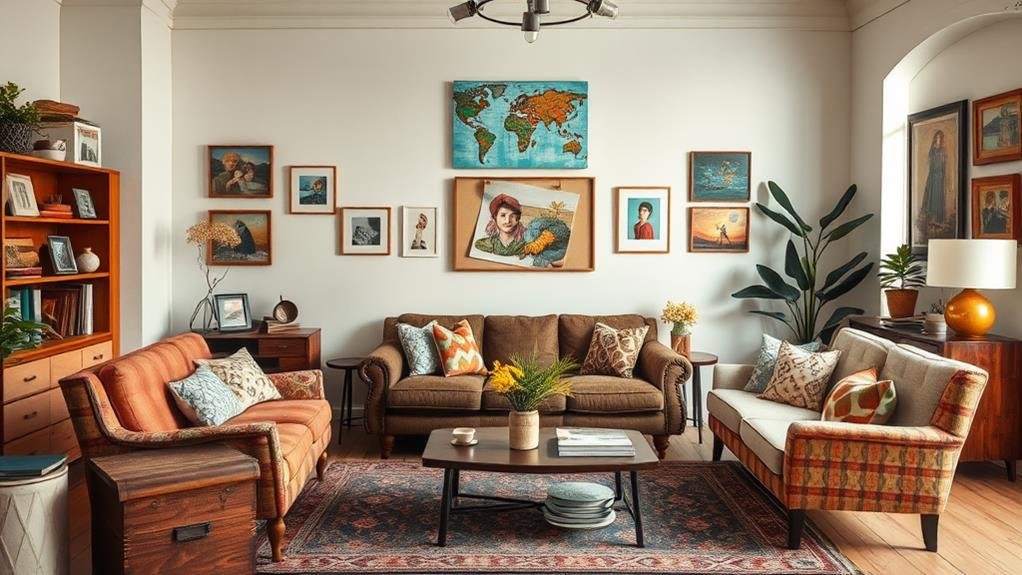
To infuse your space with a touch of character and charm, turn your attention to the art of personalization and style. Your home should reflect your personal expression, drawing on cultural influences and storytelling elements to create a space that tells your unique story.
Your interior design choices should mirror your lifestyle, with each piece chosen for its emotional impact and alignment with your individual preferences. Find artistic inspiration in your surroundings and let your personal experiences guide your design evolution.
Embrace timeless aesthetics that speak to your soul, creating a harmonious blend of past and present woven into your living space. Through the careful curation of furnishings and decor, you can craft a sanctuary that isn't only visually appealing but also deeply meaningful.
Let your home be a canvas for your creativity, where every piece resonates with your essence, bringing warmth and style to every corner.
Proportion and Scale
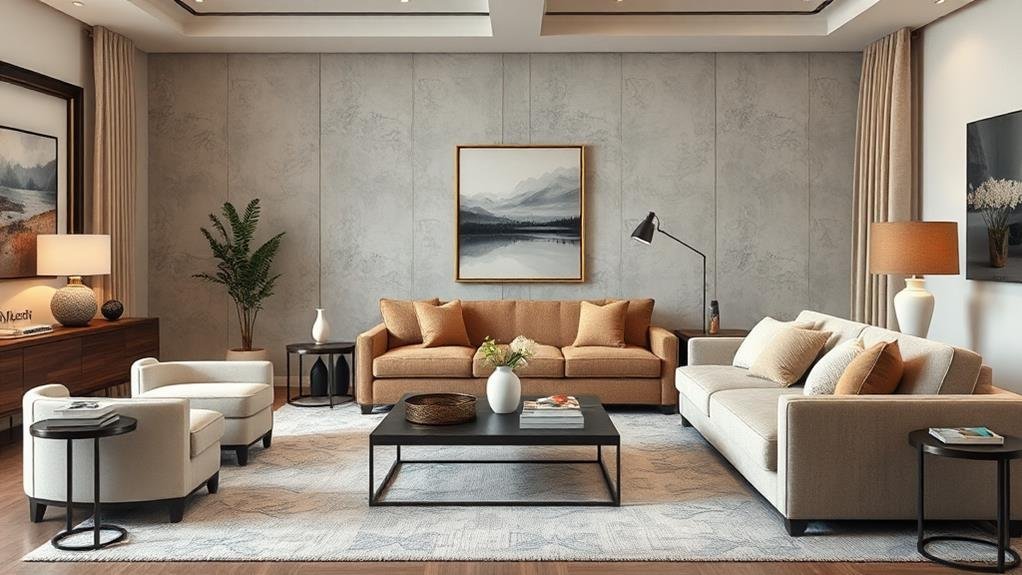
Looking around your space, you mightn't realize it, but the way furniture and decor elements relate to each other in size is key to achieving a visually pleasing and balanced interior.
Proportion and scale play a crucial role in creating a harmonious environment that feels just right. Here's a closer look at how these elements impact your space:
- Scale Relationships: The way items vary in size can either create a sense of balance or make a space feel off-kilter.
- Proportion Theory: Understanding how different elements should relate to each other in terms of size is essential for a well-designed space.
- Visual Weight: Some objects may appear heavier or lighter based on their size, color, or shape, affecting the overall balance of a room.
- Spatial Awareness: Being mindful of how much space different objects take up helps in creating a functional and visually appealing layout.
- Design Balance: Achieving a sense of equilibrium through careful placement of items and adherence to layout ratios enhances the aesthetic harmony of a room.
Consider these aspects when arranging your space to ensure a visually pleasing and balanced interior.
Sustainability and Eco-Friendly Design
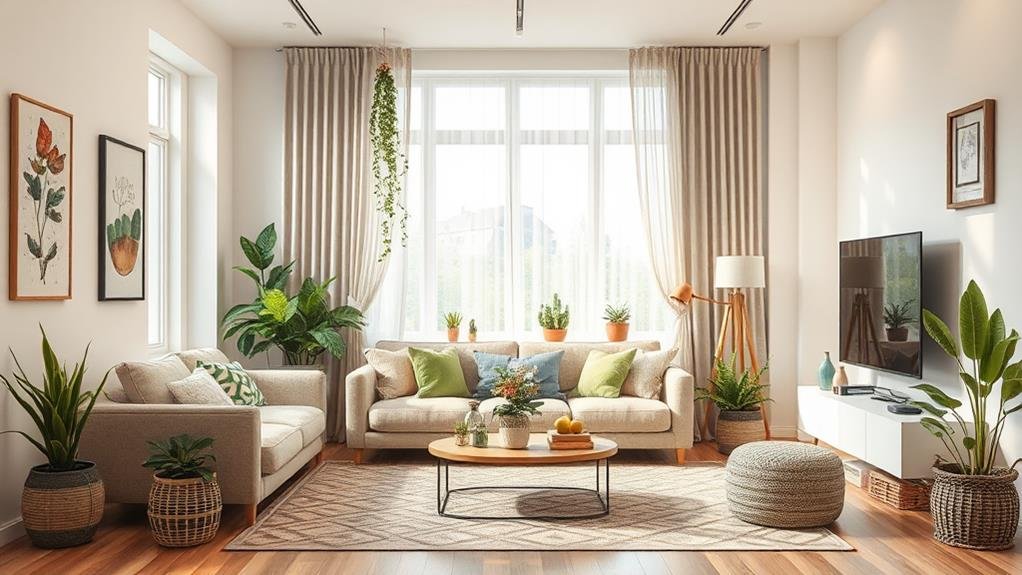
Discover the beauty of interior design that not only enhances your living space but also contributes positively to the planet with Sustainability and Eco-Friendly Design.
When incorporating sustainability into your interior design, consider using renewable materials like bamboo flooring or recycled glass countertops. Opt for energy-efficient LED lighting fixtures and appliances to reduce your environmental impact while saving on energy costs.
Embrace waste reduction by repurposing old furniture or choosing pieces made from reclaimed wood. Invite nature indoors with biophilic design elements such as indoor plants, which not only add a touch of greenery but also improve air quality.
Look for products with eco-certifications and support sustainable sourcing practices to ensure your decor aligns with your values. Consider green building principles that focus on environmental sustainability, including natural lighting to brighten spaces and decrease reliance on artificial light.
Conclusion
In conclusion, crafting a captivating interior design involves carefully selecting color schemes, furniture pieces, and textures to create a harmonious space. By focusing on lighting design, creating focal points, and adding personal touches, you can elevate your style to the next level. Remember to consider proportions and scales, as well as sustainability, to ensure a well-balanced and eco-friendly design. With these essential elements in mind, you can transform any space into a stunning sanctuary of style and sophistication.

